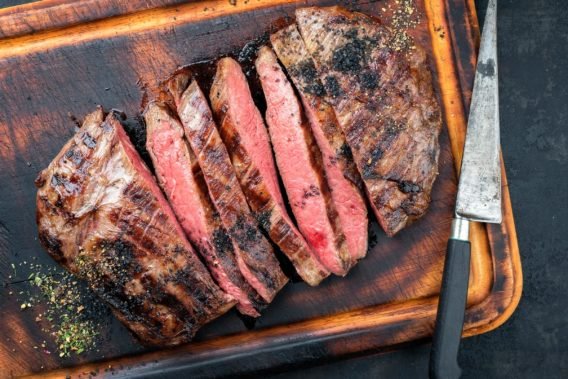Cut against the grain
 )
)
For less expensive cuts of steak, similar to base sirloin, short rib, or flank steak, Heidi Larsen of Foodie Pound suggests flame broiling the meat until medium uncommon and after that cutting it into flimsy cuts as opposed to serving the entire section of steak. "It makes each nibble somewhat littler and progressively succulent," she clarifies. Simply be to certain cut contrary to what would be expected—else, you'll be left with chewy meat. Here are 10 other basic slip-ups to maintain a strategic distance from when cooking a steak.
Sprinkle on sugar

Try not to hold back on the sugar on the off chance that you need an eatery quality steak without the heavy sticker price. Consolidate dark colored sugar with the flavors based on your personal preference (paprika, garlic powder, salt, and so forth.), at that point rub it liberally everywhere throughout the outside of the meat before cooking. It will keep a portion of the juices inside the meat while giving that sparkling caramelized covering you cherish.
Check the temperature

Focus on the temperature of the meat. The vast majority don't understand that they're overcooking (or half-cooking!) meat which makes it chewy and extreme to swallow. The perfect temperature, particularly for more affordable slices which should be cooked consummately to taste great, is medium or around 140 degrees Fahrenheit. Check the meat as often as possible with a thermometer while flame broiling or singing.
Grill with cast iron

Take your flame broiling amusement to the following dimension by setting a reasonable steak, similar to a fold or level iron, in a cast iron skillet before putting it on the grill. Thusly, you'll trap in the majority of the juices as opposed to giving them a chance to dribble through the flame broil grinds with the goal that the steak stays soften in-your-mouth clammy. Try not to have one? Discover 12 of the most dependable cast-iron skillets you can purchase.